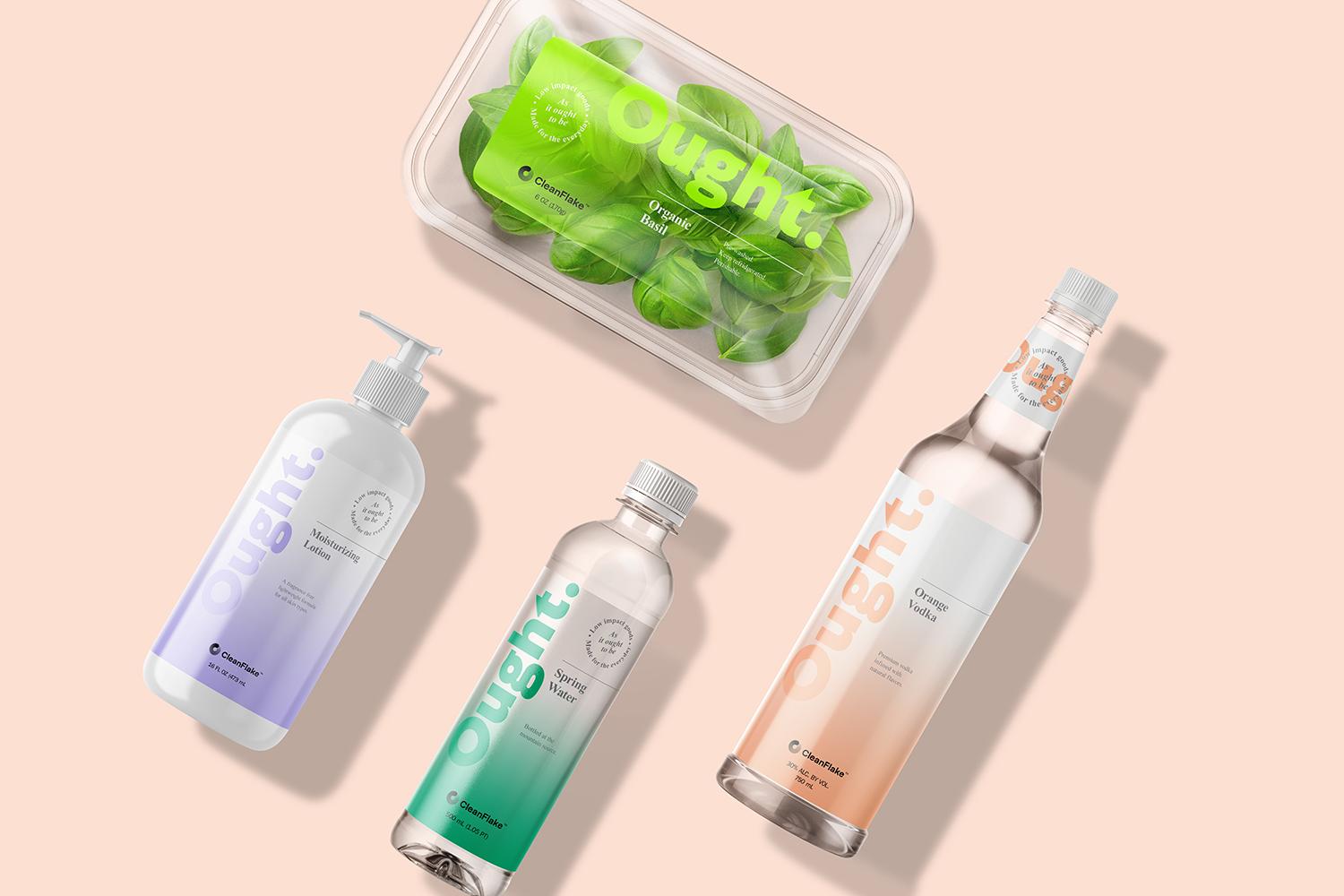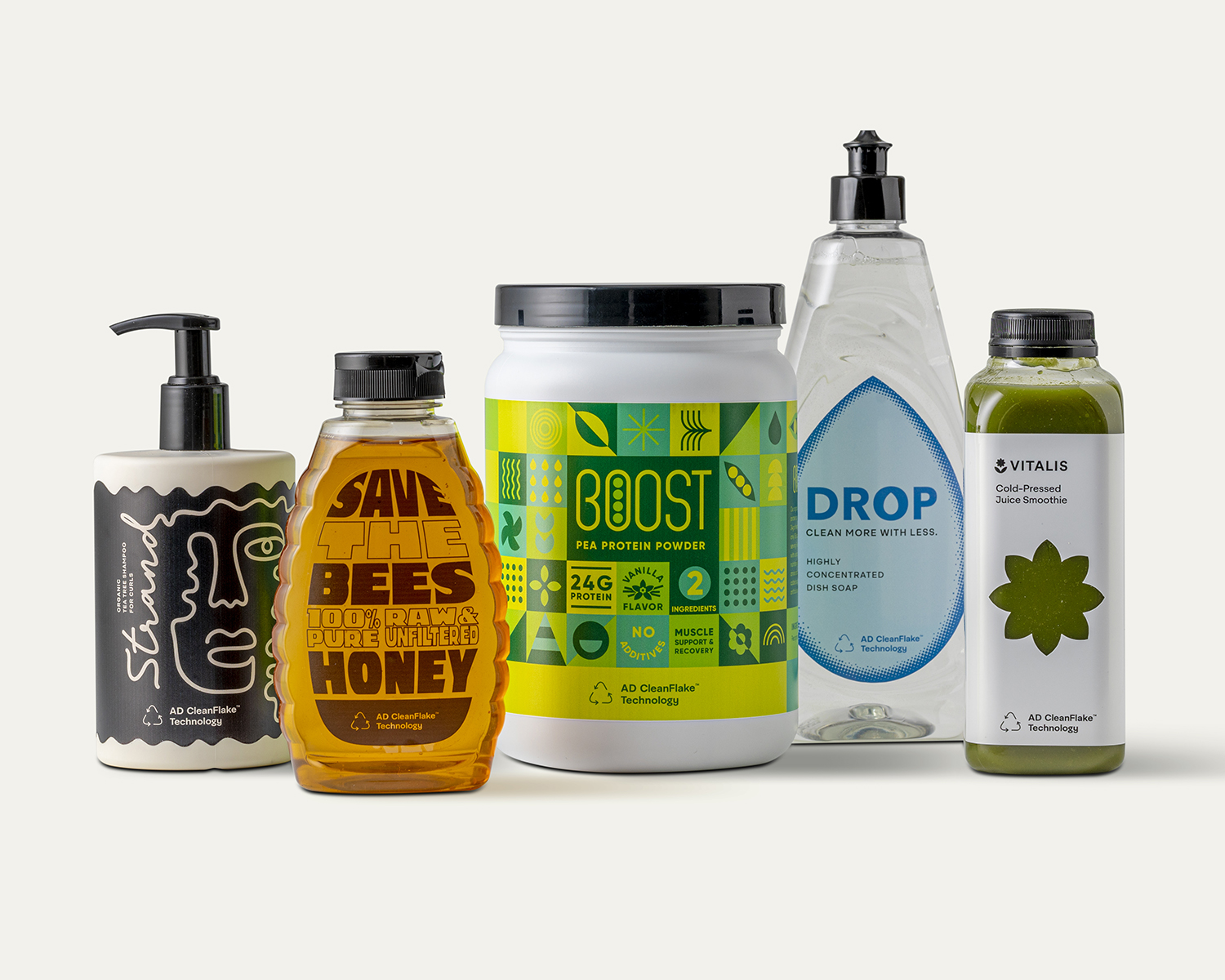
Materials science company Avery Dennison created pressure-sensitive labels that look like the ones we're familiar with but can be easily separated from packaging during the recycling process. (Image courtesy of Avery Dennison.)
In the late 2010s, shocking news about the sheer amount of plastic in the oceans, alongside growing concerns about microplastics in the environment, led brands to make ambitious recycling and reuse goals. Companies set plans to rapidly reduce the amount of plastic waste in their packaging and operations. Several joined an ambitious commitment by the Ellen MacArthur Foundation to create a circular economy for plastics.
Unfortunately, several years later, progress on the goals is lacking. Most brands are likely to miss their 2025 targets, and plastic use and production are still rising globally.
“As plastic use continues to rapidly increase, our time to effectively limit its most dangerous impacts shrinks,” Nathan Cole, head of sustainable business at the environmental disclosure nonprofit CDP, said in a statement. “ We must accelerate action on plastics urgently.”
While a part of this is due to some brands greenwashing or not properly investing in sustainability, Pascale Wautelet, the vice president of global research and development and sustainability at the materials science company Avery Dennison, thinks lack of knowledge and data are also an important part of the problem.
“I think the scale of the ambition for 100 percent recyclability, reuse, and compostability by 2030 was huge and bold,” Wautelet told TriplePundit. “But this topic was new for many, and I think everyone across the value chain underestimated the size of the complexity.”
When it comes to consumer goods companies, packaging is a glaring sustainability challenge. Goods can be purchased in a variety of different types of bottles, bags, or containers that often utilize several different types of plastics, sometimes mixed with cardboard, metals or other materials. The reasons for this complexity are multifold — safety, marketing or to prevent spoilage — but they end up making recycling and reuse more difficult.
Another factor often ignored is labels and caps made up of different materials and attached to packaging. If not removed properly, they can clog or harm recycling and reuse systems and are rarely recyclable themselves.
“The reality is that the label and cap are small but have a huge impact on the recyclability,” Wautelet said.
Avery Dennison found itself in a unique position in this space. The company produces numerous labeling technologies, including digital RFID tags, and its primary customers are brands that use these products on packaging. Wautelet said she sees one of its new technologies, pressure-sensitive labels, as playing a key role in addressing this recyclability problem.
Think of those plastic labels on soda bottles, or those hard-to-remove glues on labels for shampoo or cosmetic bottles. These are not recyclable themselves, but are typically not removed by consumers when the plastic containers are placed in their recycling bin. Then, they lead to problems along the recycling chain, as they can be hard to remove or cause contamination.
In contrast, the latest pressure-sensitive labels are “clean release,” meaning the label and inks are easy to separate from the packaging during the recycling process.

To design the pressure-sensitive labels, Avery Dennison commissioned research to better understand the challenges and barriers holding back circularity in the consumer goods industry and show what role new technologies can play.
“There is so much more we can do to educate the value chain actors and to speed up the sustainability journey, in particular when it comes to packaging circularity,” Wautelet said.
The response to the research, so far, is well beyond Wautelet’s expectations, she said. “Brands recognize now the tangible solution of our technology, and I think they appreciate the fact it's baked with scientific data, which is very important to avoid greenwashing.”
At the core, the benefit of pressure-sensitive labels is that they can be easily removed from packaging by consumers or recyclers while still providing the design flexibility marketing departments desire. The labels reduce the trade-off between attractiveness and sustainability.
“We need to offer solutions to the entire value chain, and work openly and transparently,” Wautelet said. “Otherwise, you cannot accelerate on sustainability.”
Wautelet said she does not see pressure-sensitive labels as a silver bullet solution but as a key piece of the puzzle. Scaling them will depend on markets, recycling infrastructure and public policy. Places like Europe, with stricter circularity and recycling regulations, may be early adopters.
And there’s more to come, including pressure-sensitive labels that enhance the traceability and tracking of products, Wautelet said. “We are going to continue to double down on research and development, for the next generation of pressure-sensitive labels and continue to push the boundaries of circularity.”

Nithin Coca is a freelance journalist who focuses on environmental, social, and economic issues around the world, with specific expertise in Southeast Asia.














